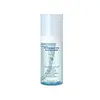What's inside
What's inside
 Key Ingredients
Key Ingredients

 Benefits
Benefits

 Concerns
Concerns

No concerns
 Ingredients Side-by-side
Ingredients Side-by-side

Avena Sativa Seed Water 77%
SolventButylene Glycol
HumectantGlycerin
Humectant2,3-Butanediol
Humectant1,2-Hexanediol
Skin ConditioningWater
Skin ConditioningAmmonium Acryloyldimethyltaurate/Vp Copolymer
Squalane
EmollientHydroxyacetophenone
AntioxidantCarbomer
Emulsion StabilisingDipotassium Glycyrrhizate
HumectantPanthenol
Skin ConditioningTromethamine
BufferingEthylhexylglycerin
Skin ConditioningInulin Lauryl Carbamate
Emulsion StabilisingSodium Surfactin
CleansingBeta-Glucan
Skin ConditioningAvena Sativa Seed Water 77%, Butylene Glycol, Glycerin, 2,3-Butanediol, 1,2-Hexanediol, Water, Ammonium Acryloyldimethyltaurate/Vp Copolymer, Squalane, Hydroxyacetophenone, Carbomer, Dipotassium Glycyrrhizate, Panthenol, Tromethamine, Ethylhexylglycerin, Inulin Lauryl Carbamate, Sodium Surfactin, Beta-Glucan
Chamaecyparis Obtusa Water
MaskingWater
Skin ConditioningButylene Glycol
Humectant1,2-Hexanediol
Skin ConditioningDipropylene Glycol
HumectantSodium Hyaluronate
HumectantPotassium Hyaluronate
Skin ConditioningSodium Hyaluronate Crosspolymer
HumectantSodium Acetylated Hyaluronate
HumectantHydroxypropyltrimonium Hyaluronate
Hydrolyzed Hyaluronic Acid
HumectantHyaluronic Acid
HumectantDimethylsilanol Hyaluronate
HumectantPanthenol
Skin ConditioningBrassica Oleracea Capitata Leaf Extract
Skin ConditioningSalvia Sclarea Extract
AntiseborrhoeicLavandula Angustifolia Flower Extract
CleansingHyacinthus Orientalis Extract
Skin ConditioningChamomilla Recutita Flower Extract
MaskingCentaurea Cyanus Flower Extract
AstringentBorago Officinalis Extract
EmollientBetaine
HumectantBrassica Oleracea Italica Extract
AstringentBeta-Glucan
Skin ConditioningCurcuma Longa Root Extract
MaskingScutellaria Baicalensis Root Extract
AstringentTriticum Vulgare Sprout Extract
Skin ConditioningMedicago Sativa Extract
TonicRaphanus Sativus Seed Extract
Skin ConditioningBrassica Campestris Extract
Skin ConditioningMalachite Extract
AntioxidantEthylhexylglycerin
Skin ConditioningArginine
MaskingCarbomer
Emulsion StabilisingDisodium EDTA
Chamaecyparis Obtusa Water, Water, Butylene Glycol, 1,2-Hexanediol, Dipropylene Glycol, Sodium Hyaluronate, Potassium Hyaluronate, Sodium Hyaluronate Crosspolymer, Sodium Acetylated Hyaluronate, Hydroxypropyltrimonium Hyaluronate, Hydrolyzed Hyaluronic Acid, Hyaluronic Acid, Dimethylsilanol Hyaluronate, Panthenol, Brassica Oleracea Capitata Leaf Extract, Salvia Sclarea Extract, Lavandula Angustifolia Flower Extract, Hyacinthus Orientalis Extract, Chamomilla Recutita Flower Extract, Centaurea Cyanus Flower Extract, Borago Officinalis Extract, Betaine, Brassica Oleracea Italica Extract, Beta-Glucan, Curcuma Longa Root Extract, Scutellaria Baicalensis Root Extract, Triticum Vulgare Sprout Extract, Medicago Sativa Extract, Raphanus Sativus Seed Extract, Brassica Campestris Extract, Malachite Extract, Ethylhexylglycerin, Arginine, Carbomer, Disodium EDTA
 Reviews
Reviews

Ingredients Explained
These ingredients are found in both products.
Ingredients higher up in an ingredient list are typically present in a larger amount.
1,2-Hexanediol is a synthetic liquid and another multi-functional powerhouse.
It is a:
- Humectant, drawing moisture into the skin
- Emollient, helping to soften skin
- Solvent, dispersing and stabilizing formulas
- Preservative booster, enhancing the antimicrobial activity of other preservatives
Beta-Glucan is a polysaccharide. It can be derived from the cell walls of seaweed, oats, yeast, and fungi. It hydrates the skin and helps boost your skin's natural barrier.
As an antioxidant, beta-glucan helps fight free-radicals. Free-radicals are molecules that may damage your skin cells, such as pollution.
Studies show this ingredient may be an effective wrinkle reducer as it can deeply penetrate into skin. It has also been show to help with wound healing.
Learn more about Beta-GlucanButylene Glycol (or BG) is used within cosmetic products for a few different reasons:
Overall, Butylene Glycol is a safe and well-rounded ingredient that works well with other ingredients.
Though this ingredient works well with most skin types, some people with sensitive skin may experience a reaction such as allergic rashes, closed comedones, or itchiness.
Learn more about Butylene GlycolCarbomer is a polymer of acrylic acid. Its main role is to create a gel consistency.
A high amount of carbomer can cause pilling or balling up of products. Don't worry, most products contain 1% or less of carbomer.
Ethylhexylglycerin (we can't pronounce this either) is commonly used as a preservative and skin softener. It is derived from glyceryl.
You might see Ethylhexylglycerin often paired with other preservatives such as phenoxyethanol. Ethylhexylglycerin has been found to increase the effectiveness of these other preservatives.
Panthenol is a common ingredient that helps hydrate and soothe the skin. It is found naturally in our skin and hair.
There are two forms of panthenol: D and L.
D-panthenol is also known as dexpanthenol. Most cosmetics use dexpanthenol or a mixture of D and L-panthenol.
Panthenol is famous due to its ability to go deeper into the skin's layers. Using this ingredient has numerous pros (and no cons):
Like hyaluronic acid, panthenol is a humectant. Humectants are able to bind and hold large amounts of water to keep skin hydrated.
This ingredient works well for wound healing. It works by increasing tissue in the wound and helps close open wounds.
Once oxidized, panthenol converts to pantothenic acid. Panthothenic acid is found in all living cells.
This ingredient is also referred to as pro-vitamin B5.
Learn more about PanthenolWater. It's the most common cosmetic ingredient of all. You'll usually see it at the top of ingredient lists, meaning that it makes up the largest part of the product.
So why is it so popular? Water most often acts as a solvent - this means that it helps dissolve other ingredients into the formulation.
You'll also recognize water as that liquid we all need to stay alive. If you see this, drink a glass of water. Stay hydrated!
Learn more about Water